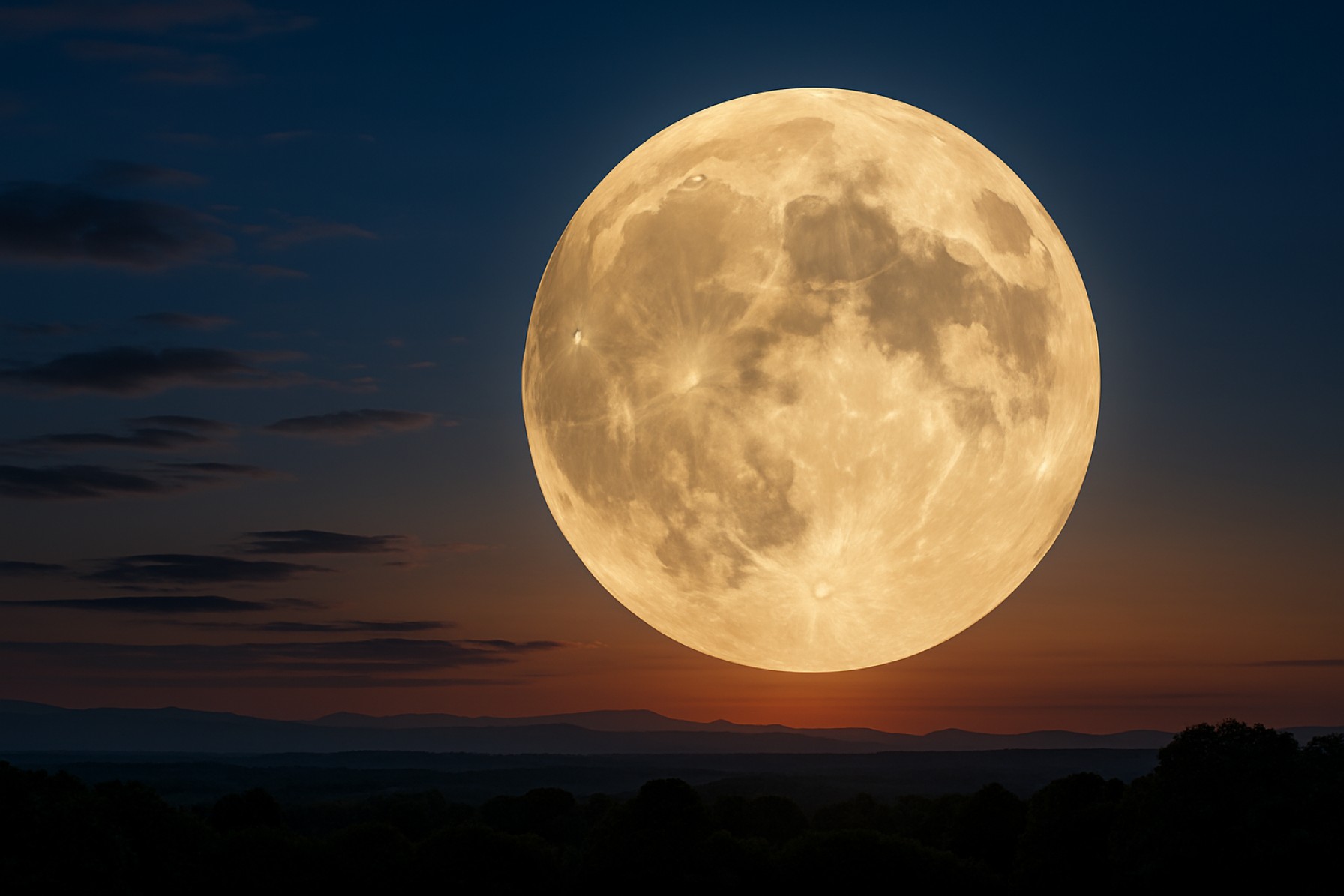Rare Lunar Spectacle Set to Paint the June Night Sky — Don’t Miss the Lowest Full Moon in 18 Years!
This June, the full Moon will appear larger and lower than ever, giving skywatchers a romantic and historic celestial show.
- Date: June 10-11, 2025 — Full Moon reaches its lowest point in 18 years
- Moon Altitude: Just 10° above the horizon for much of the UK and Ireland
- Major Standstill: Next similar event won’t happen until 2043
June 2025 brings a once-in-a-generation celestial display as the full Moon will hang unusually low and luminous in the night sky, sparking awe and wonder for stargazers across the UK and Ireland. Couples, families, and night sky lovers are preparing for an ethereal moonrise — the kind immortalized in poetry, art, and ancient legend.
But this isn’t your average “moon in June.” The night of June 10-11 marks the lowest full Moon in nearly two decades — a rare occurrence called a “major lunar standstill.” This phenomenon won’t be seen again until 2043, making 2025 a magical year for moon watchers from London, Cardiff, and Cork, to the windswept Shetland Isles.
Why Is the June Full Moon So Low in 2025?
Q: What Makes the 2025 Full Moon So Special?
For those gazing skyward, the full Moon this June will rise only about 10 degrees above the southern horizon — imagine your clenched fist at arm’s length pointing to the moon’s path. In northern locations like Shetland, the moon barely clears the horizon at all.
The mystery behind this phenomenon begins not with the Moon, but with the Sun. Every year, the Sun follows a predictable route through the constellations of the zodiac, peaking high in the sky at midsummer. The Moon, however, tracks a similar course but is tilted and constantly shifting — sometimes higher, sometimes much lower.
This year, the Moon’s orbit reaches its southernmost extreme, swinging far below the Sun’s path. Astronomers call this a “major lunar standstill,” an 18.6-year event when the full Moon clings closest to the horizon.
Q: What Does It Look Like — and Why Does It Seem So Big?
As the June full Moon skims low and bright along the landscape, it will appear unusually large and golden due to atmospheric distortion — a breathtaking sight for anyone strolling outdoors after sunset.
If you’re near historic landmarks like Stonehenge or the mystical circles of Calanais in the Outer Hebrides, you’re walking in the footsteps of ancient astronomers. These megaliths align precisely with such rare lunar risings, proving that our ancestors tracked lunar cycles across generations — their lifespans measured by the Moon’s rhythm.
Ancient Stone Circles and the Moon: Secrets Written in Stone
Q: How Did Ancient Peoples Know to Build These Alignments?
Stonehenge’s “station stones” point to the Moon’s extreme rise at standstills, while Calanais’s long avenue offers a dramatic front-row view of the lunar skim over the hills known as Cailleach Na Mointeach.
Researchers have found that these astonishing monuments were more than sun-worshipping sites; they were lunar observatories, recording an 18–19 year dance of moonrise and moonset, likely understood even as life expectancies hovered under 30 years.
Learn more about ancient stone monuments at British Museum and explore astronomical history at NASA.
How You Can See the 2025 Standstill Full Moon
How to Experience the Best View
- Best Date: Night of June 10-11, soon after sunset
- Location: Wherever you have a clear, unobstructed view of the southern horizon — hills, coastlines, open fields
- Gear: Naked eye works, but binoculars or a small telescope will add wow-factor details
- Pro Tip: Use a landscape feature or ancient monument for context — it’s a photographer’s dream!
Sky Events to Watch: June 2025 Astronomy Highlights
Q: What Other Celestial Events Should I Watch This Month?
June packs more than just a bombshell full Moon:
- June 17: Mars shines next to blue Regulus, giving Leo a “double heart” — a strikingly colorful planet-star pair
- June 21: Summer solstice brings the highest Sun and shortest night for the Northern Hemisphere
- June 23: In the pre-dawn sky, the Moon sweeps past the Pleiades — a shimmering “star cluster hide-and-seek”
- Late June: Spot elusive Mercury low in the northwest, and Venus blazing in the morning sky
Find basic sky maps and guides at Sky & Telescope and Royal Museums Greenwich.
Seize the Celestial Moment!
Don’t let this lunar rarity pass you by — the next opportunity is nearly two decades away. Invite friends, plan a late-night stroll, or journey to a local heritage site for an unforgettable night under the lowest full Moon of your lifetime.
Checklist for the June 2025 Full Moon Event:
- Mark June 10-11 on your calendar
- Scout a southern-facing location with horizon views
- Charge your camera or prep your binoculars
- Share the experience on social — tag #MoonInJune2025
- Visit ancient sites or museums to deepen the experience
Get ready to moon-gaze — this romantic, historic sky show won’t return until 2043!












